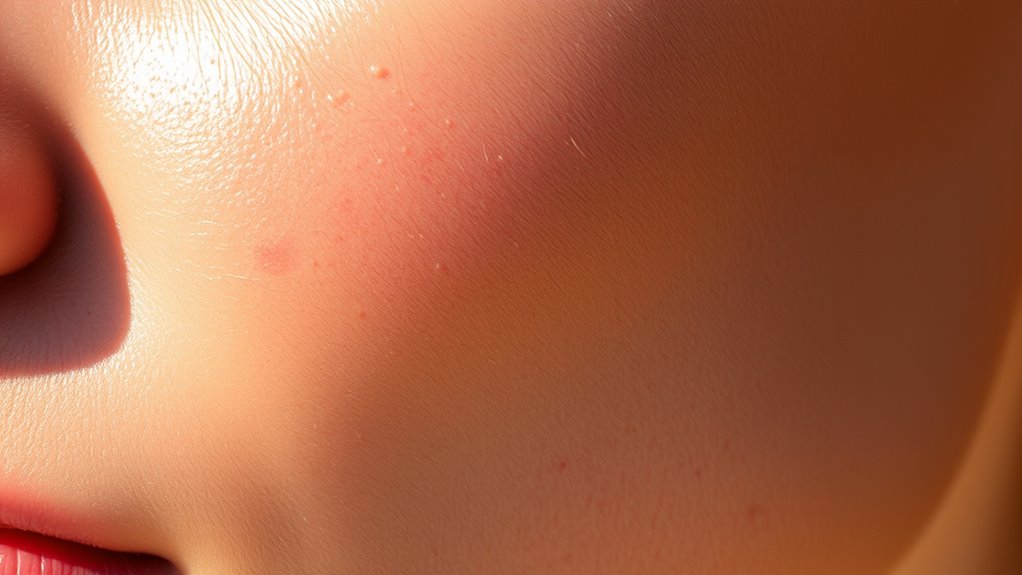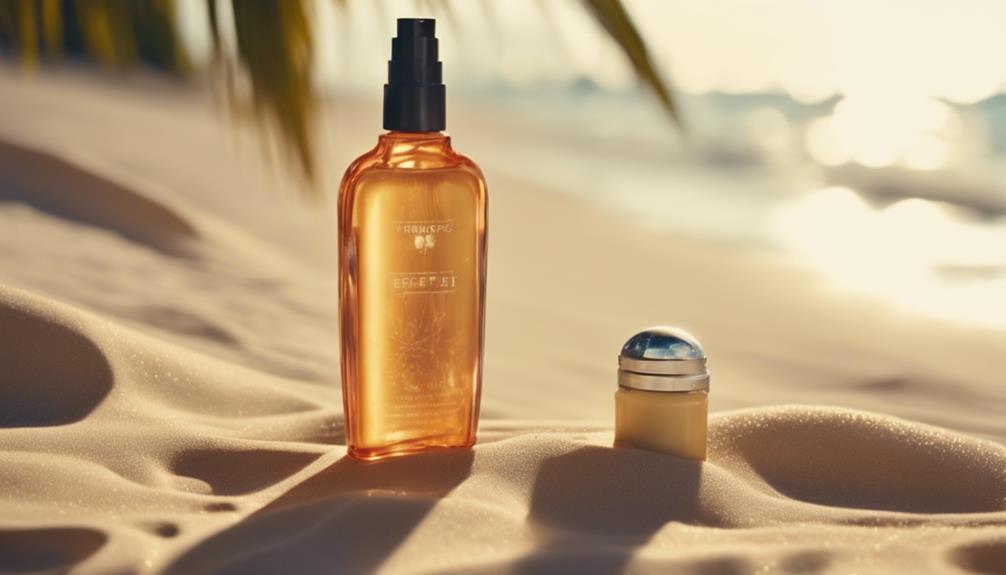You should see a dermatologist after tanning if you notice new or changing moles, persistent skin irritation, or any signs of skin damage that don’t improve within a week. Watch for unusual spots, bumps, or redness that worsens or doesn’t heal. If you experience painful or bleeding skin, or if you see any suspicious changes, getting prompt care is essential. Keep exploring to learn more about protecting your skin health afterward.
Key Takeaways
- Schedule a dermatologist appointment within 1-3 months after intense or seasonal tanning sessions.
- See a dermatologist promptly if you notice new moles or skin growths that appear or change.
- Visit immediately if you experience persistent redness, swelling, blistering, or skin pain post-tanning.
- Seek medical care if you develop unusual pigmentation, rough patches, or open sores that do not heal.
- Consult a dermatologist promptly for any suspicious skin lesions, especially if they bleed, itch, or enlarge quickly.
Regular Skin Checks and Monitoring
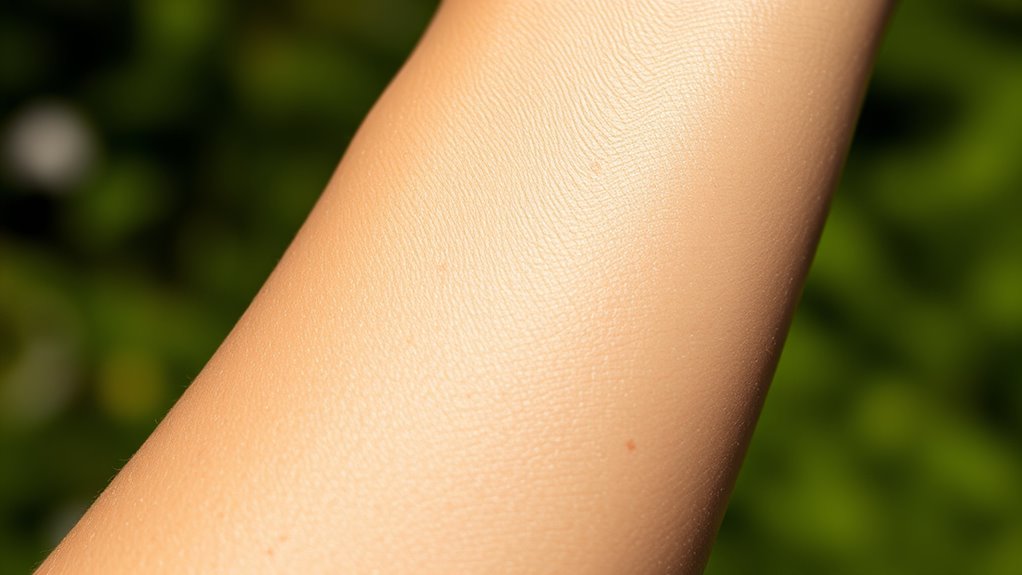
Regular skin checks are essential for catching skin cancer early, when it’s most treatable. Since skin cancer is one of the most common cancers in the U.S., catching it early saves lives. If you’ve had significant sun exposure or used tanning beds, your risk increases, making regular monitoring even more crucial. Those with fair skin, many moles, or a family history should prioritize frequent skin checks. Typically, checking your skin every two to three years is enough, but annual exams are recommended if you’re high risk. These checks help you spot any changes or new growths before they become serious. Regular monitoring empowers you to manage your skin health proactively and ensures that any suspicious lesions are caught early, improving treatment outcomes. Additionally, understanding indoor and outdoor air quality can help you reduce environmental risk factors that might contribute to skin issues. Maintaining overall skin health through proper hydration and skincare routines supports early detection efforts. Being aware of the signs of skin cancer can further enhance your ability to identify problems early, leading to better treatment success. Proper benefit from early detection significantly improves your chances of successful treatment and recovery.
Signs of Skin Changes That Require Immediate Attention
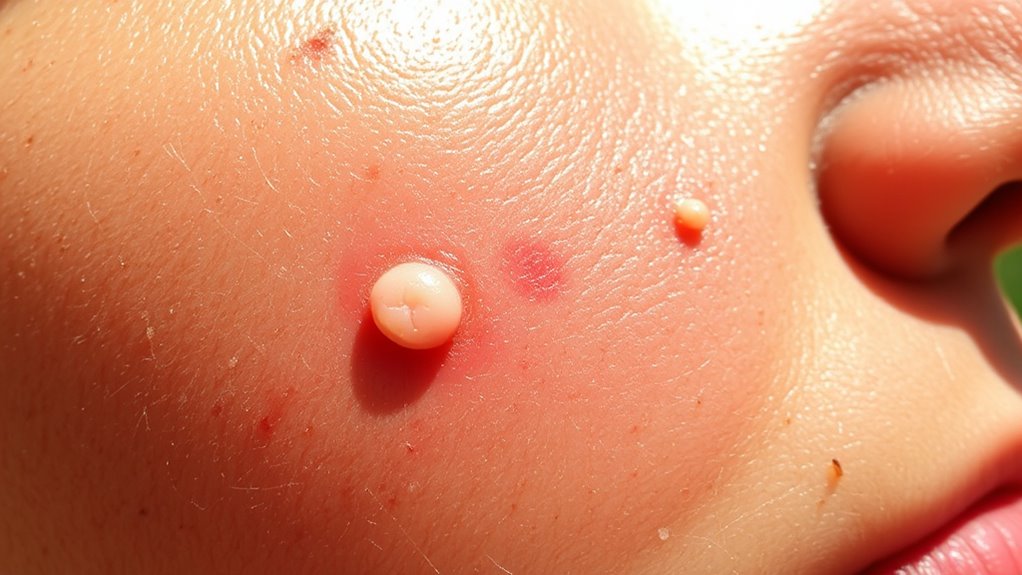
Certain skin changes after tanning can signal serious issues that demand immediate medical attention. If you notice sudden, dark spots that spread quickly, especially with irregular borders or bleeding, see a dermatologist right away. Watch for lesions that persist beyond two weeks without improvement or rapidly enlarge beyond 6mm. Mottled pigmentation with uneven tones also warrants prompt evaluation. Unusual textures like rough patches, thick plaques, or painful nodules should raise concern, especially if they worsen or crust over. Regular skin checks and monitoring can help prevent complications. Acute reactions such as blisters, persistent redness, warmth, swelling, or resistant pustules require urgent care. Systemic symptoms like fever, joint pain, respiratory issues, vision changes, or neurological sensations linked to skin changes are critical warning signs. Additionally, the presence of credit card fraud or suspicious activity in your financial accounts can sometimes be an indication of compromised personal data, emphasizing the importance of monitoring all aspects of your health and security. Recognizing the importance of skin self-examination can aid in early detection of concerning changes. Developing a routine for early detection can significantly improve treatment outcomes. Incorporating AI-driven security systems into your health monitoring routines can help identify unusual patterns or symptoms early on. Don’t ignore these signs—seek immediate medical advice to address potential severe conditions.
When to Schedule a Follow-Up After Tanning Sessions
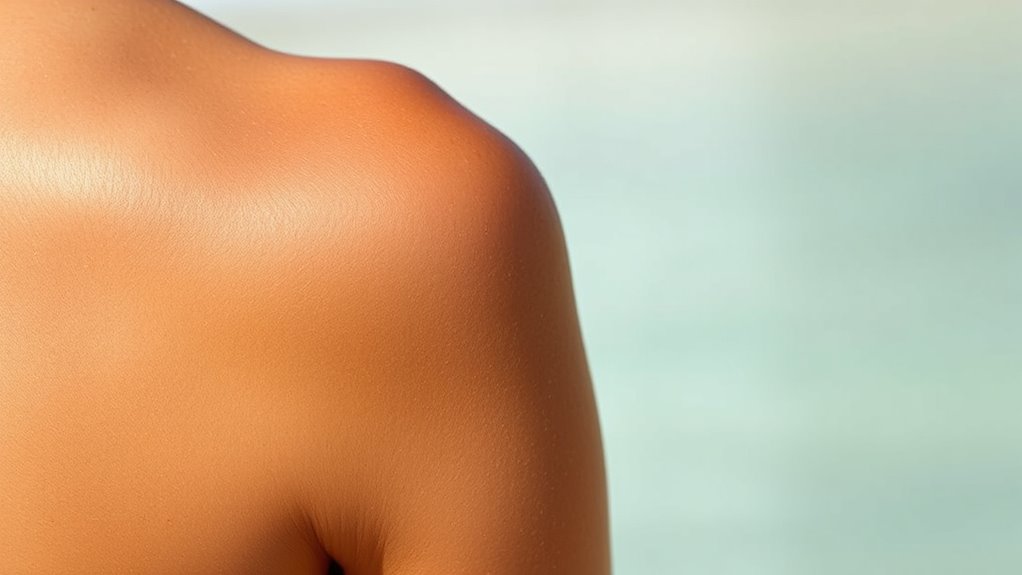
After noticing skin changes following tanning, scheduling follow-up exams helps guarantee your skin stays healthy. If you’ve had intense or seasonal tanning, plan your first professional exam within 1 to 3 months afterward. For frequent tanners, especially those who use tanning beds regularly, quarterly check-ups are recommended due to cumulative UV damage. If you’ve experienced recent sunburns, see a dermatologist within 4 to 6 weeks to assess any potential harm. Even if you feel fine, annual exams are essential, especially for frequent outdoor tanners without a history of skin cancer. High-risk individuals, like those with fair skin or prior skin issues, should consider more frequent visits—every six months or sooner if needed. Regular follow-ups help detect early changes and keep your skin healthy long-term.
Recognizing Early Indicators of Skin Cancer
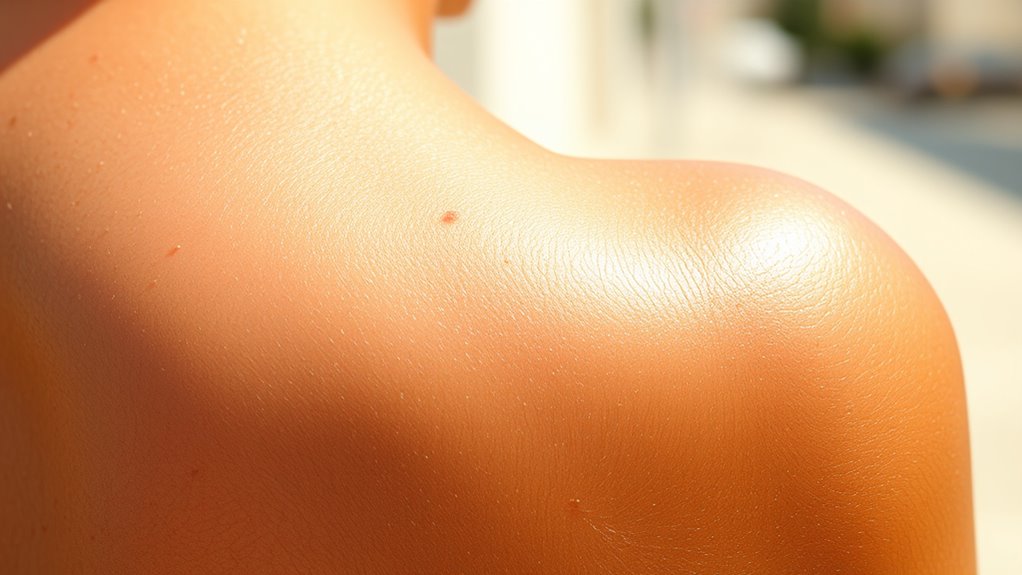
Recognizing early indicators of skin cancer is essential for catching problems before they become serious. Look out for new growths that resemble moles, bumps, or scabs, especially if they don’t heal or change over time. Rough patches or persistent sores that won’t go away could signal trouble. Pay attention to color changes in existing moles, such as darkening or multiple hues, and notice irregular borders or mixed colors like red, white, or blue. Basal cell carcinoma may appear as shiny, waxy bumps or scar-like patches that bleed or scab. Squamous cell carcinoma often shows as firm, red nodules or scaly, crusted lesions that become tender. Melanomas tend to change in size, shape, or color, especially if they itch, bleed, or appear in unusual areas. Regularly monitor your skin for these signs, and understanding Tanned Skin can help you identify the most concerning changes early. Recognizing mole irregularities is also crucial, as they may be early signs of melanoma. Additionally, being aware of UV exposure effects can aid in prevention and early detection. Being informed about the air quality in your environment can also impact your skin health and overall well-being.
The Risks of Delaying Dermatologist Consultation

Delaying a dermatologist appointment after tanning increases your risk of having skin cancer progress to more advanced and harder-to-treat stages. If you wait too long, early signs of cancer can grow larger, more aggressive, and harder to remove. Melanoma risk rises considerably with indoor tanning, especially before age 35, increasing your lifetime risk by 75%. Non-melanoma skin cancers, like basal cell carcinoma, also become more likely with repeated tanning. Postponing skin exams means missing critical windows for early detection, which can lower survival rates. UV damage from tanning causes DNA mutations that accelerate cancer development. Early diagnosis paired with prompt treatment offers better outcomes, while delays can lead to more invasive procedures, metastasis, and higher healthcare costs. Essential oils for skin healing may support skin recovery, but they are not substitutes for professional medical evaluation. Don’t risk your health—see a dermatologist promptly after tanning.
Preventive Measures and Long-Term Skin Care After Tanning
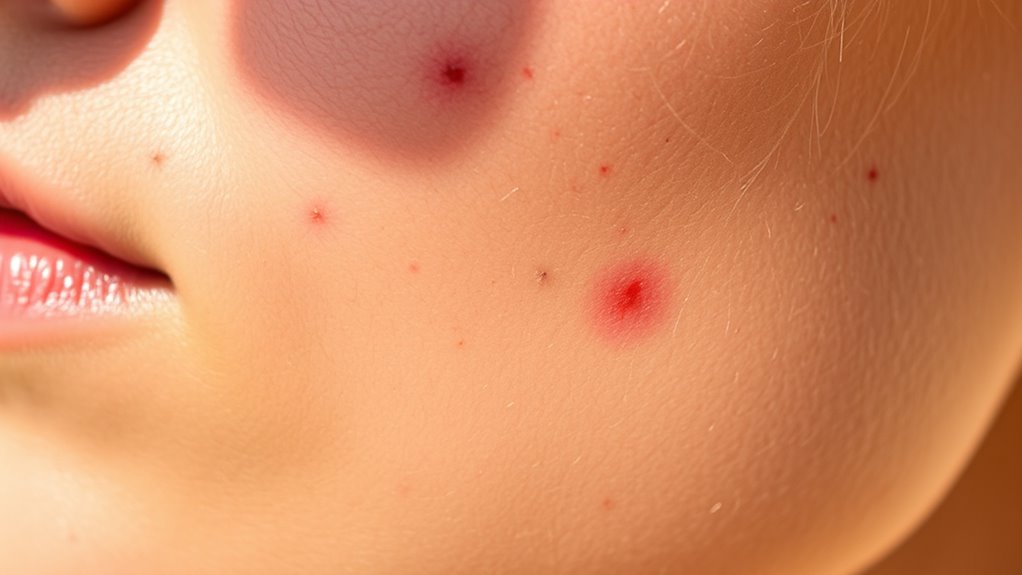
Implementing a consistent preventive care routine and adopting long-term skin care strategies are essential to protect your skin after tanning. Start by cooling your skin immediately with lukewarm water to reduce heat damage. Use fragrance-free moisturizers to restore hydration and minimize peeling, and avoid tight clothing for 8–12 hours to prevent irritation. Apply SPF 30+ sunscreen daily, even indoors, and seek shade during peak UV hours. Incorporate hyaluronic acid into your routine to maintain moisture and use occlusive creams at night to lock in hydration. Stay well-hydrated and reapply moisturizer every 4–6 hours in dry environments. Wear UPF clothing outdoors and consider antioxidant serums to neutralize residual free radicals. Regular skin checks and dermatologist consultations help catch issues early and make certain long-term skin health. Additionally, paying attention to proper USB cable selection can ensure your devices stay powered and connected, which is crucial for maintaining your skincare devices and wellness routines.
Frequently Asked Questions
Can Tanning Increase My Risk of Developing Skin Allergies?
Tanning can definitely increase your risk of developing skin allergies, especially if you have sensitive skin or pre-existing conditions like dermatitis. UV radiation from tanning beds or sun exposure can trigger allergic reactions, causing itching, redness, and bumps. Using tanning products with allergens can make things worse. To protect yourself, limit exposure, choose hypoallergenic products, and watch for signs of allergic reactions. If you notice persistent or severe symptoms, see a dermatologist promptly.
How Long Should I Wait After Tanning Before Seeing a Dermatologist?
You might wonder how long to wait after tanning before seeing a dermatologist. If you experience severe sunburn with blisters, see a doctor immediately. For mild symptoms like redness or peeling, wait until they worsen or persist beyond a few days. If you notice new or suspicious skin changes, schedule a visit sooner. Generally, follow your dermatologist’s advice based on your skin’s response and personal risk factors.
Are There Specific Signs That Indicate Immediate Need for Medical Attention?
You might wonder if your tanning results are normal, but certain signs demand urgent attention. If you notice blistering, large skin bubbles, or intense pain that over-the-counter meds can’t relieve, seek help immediately. Watch for extensive redness, swelling, fever, chills, or open wounds. Any new or changing moles, persistent soreness, bleeding, or symptoms like headache, nausea, or dizziness are warning signs. Don’t delay—your skin’s health is at stake.
Does Tanning Affect the Effectiveness of Skin Cancer Screenings?
Tanning can definitely affect the effectiveness of skin cancer screenings. It darkens your skin and causes discoloration, making it harder for dermatologists to spot early signs like new moles or unusual changes. This can delay diagnosis and treatment. To stay proactive, you should have regular check-ups, especially if you tan frequently, and consider advanced tools like dermoscopy. Staying vigilant helps catch issues early and improves your skin health.
Can Skin Damage From Tanning Be Reversed or Repaired?
Skin damage from tanning can be partially reversed or repaired, but it’s not a complete fix. You can use treatments like lasers, chemical peels, and topical medications to remove damaged skin layers and reduce dark spots. Combining professional procedures with at-home skincare — like retinoids, antioxidants, and moisturizers — helps improve skin texture, discoloration, and wrinkles. Regular dermatologist visits guarantee your skin heals properly and your treatment plan stays effective.
Conclusion
Remember, while you might think a tan is just temporary, skin changes can sneak up unexpectedly. If you’ve had recent tanning sessions, keep an eye on your skin and schedule a dermatologist visit if anything looks unusual. Sometimes, a small spot you overlook today could be the early sign of something more serious tomorrow. Stay proactive, because your skin’s health might depend on catching those signs just before they become a bigger concern.
